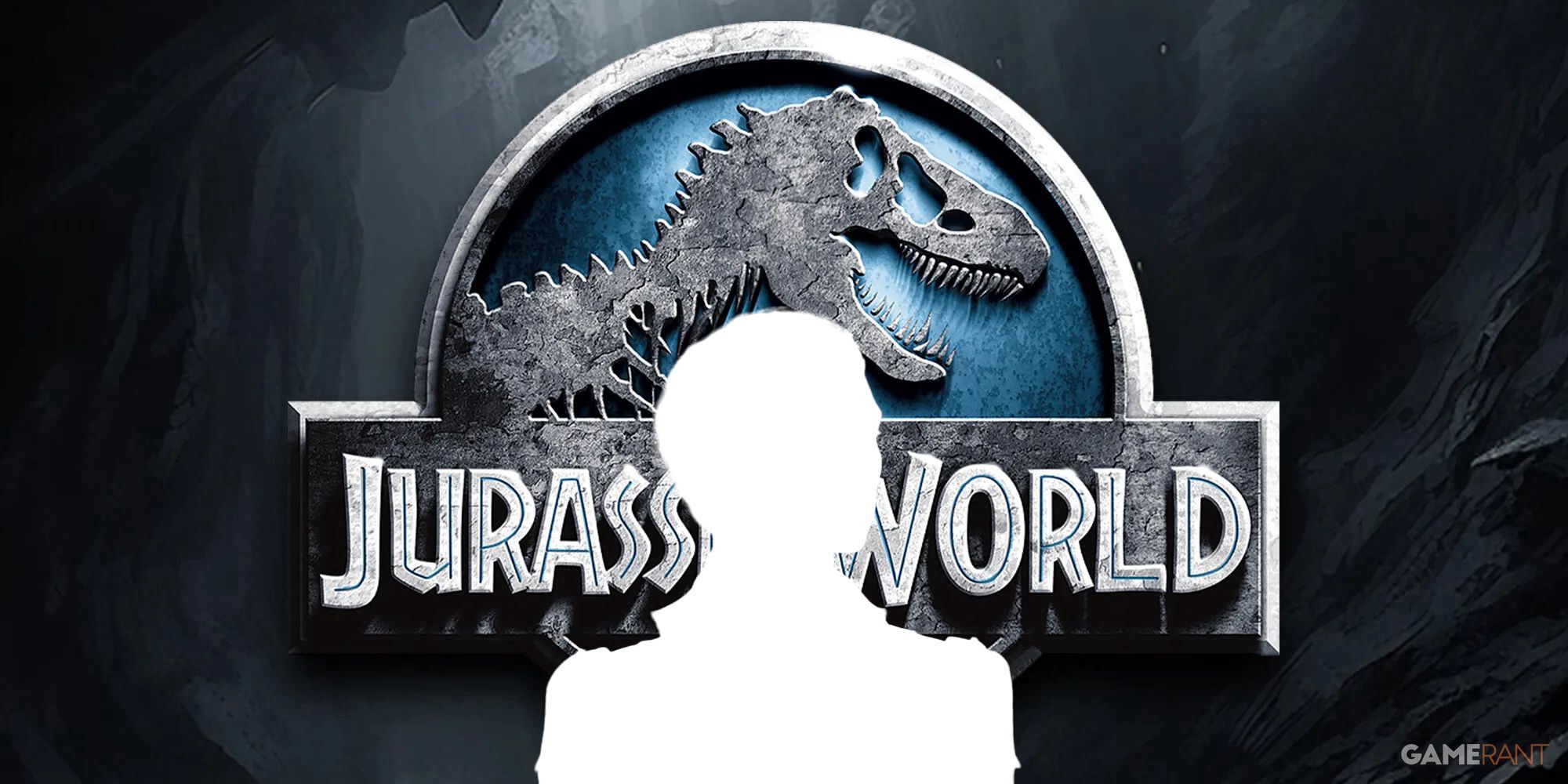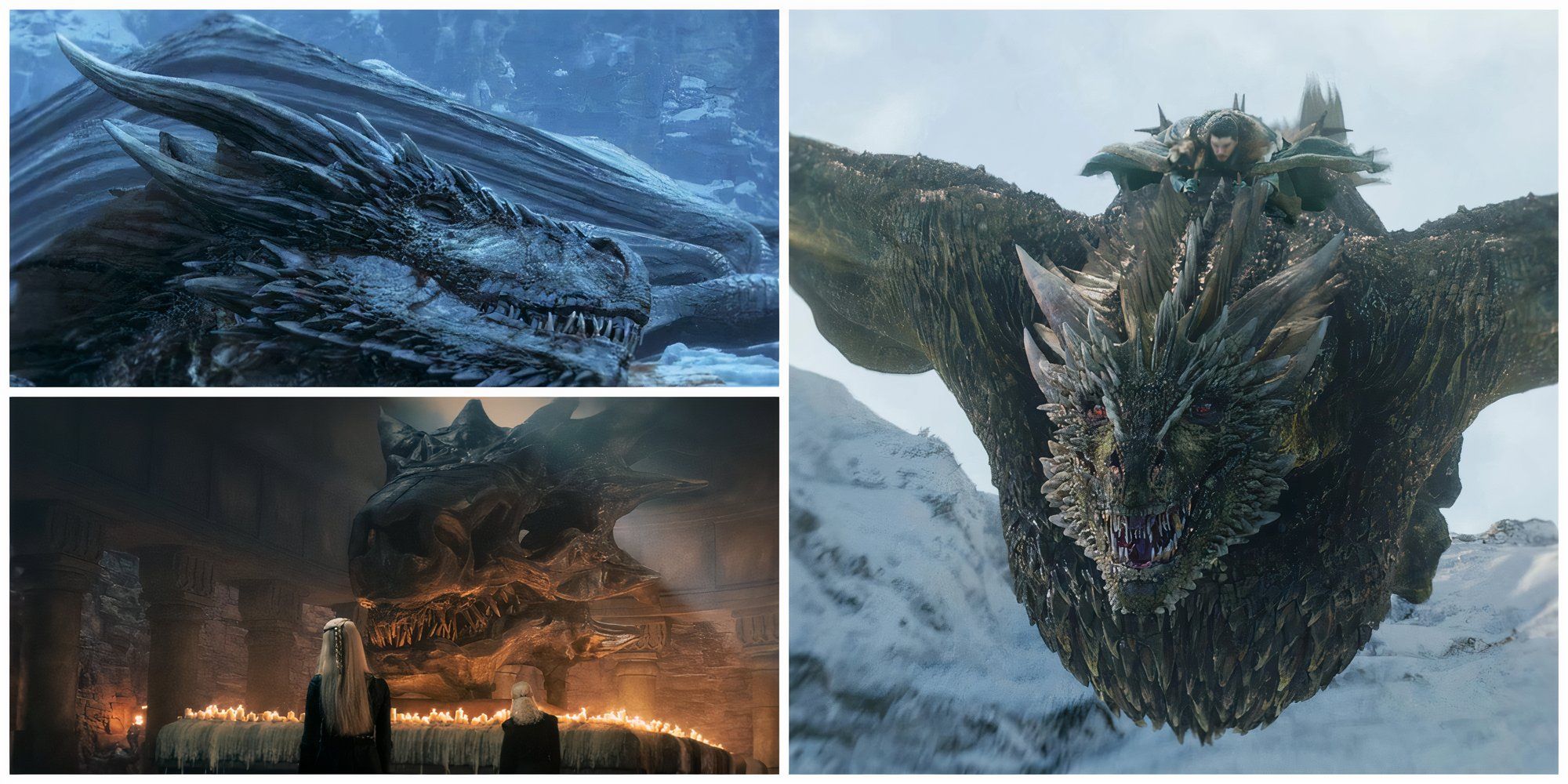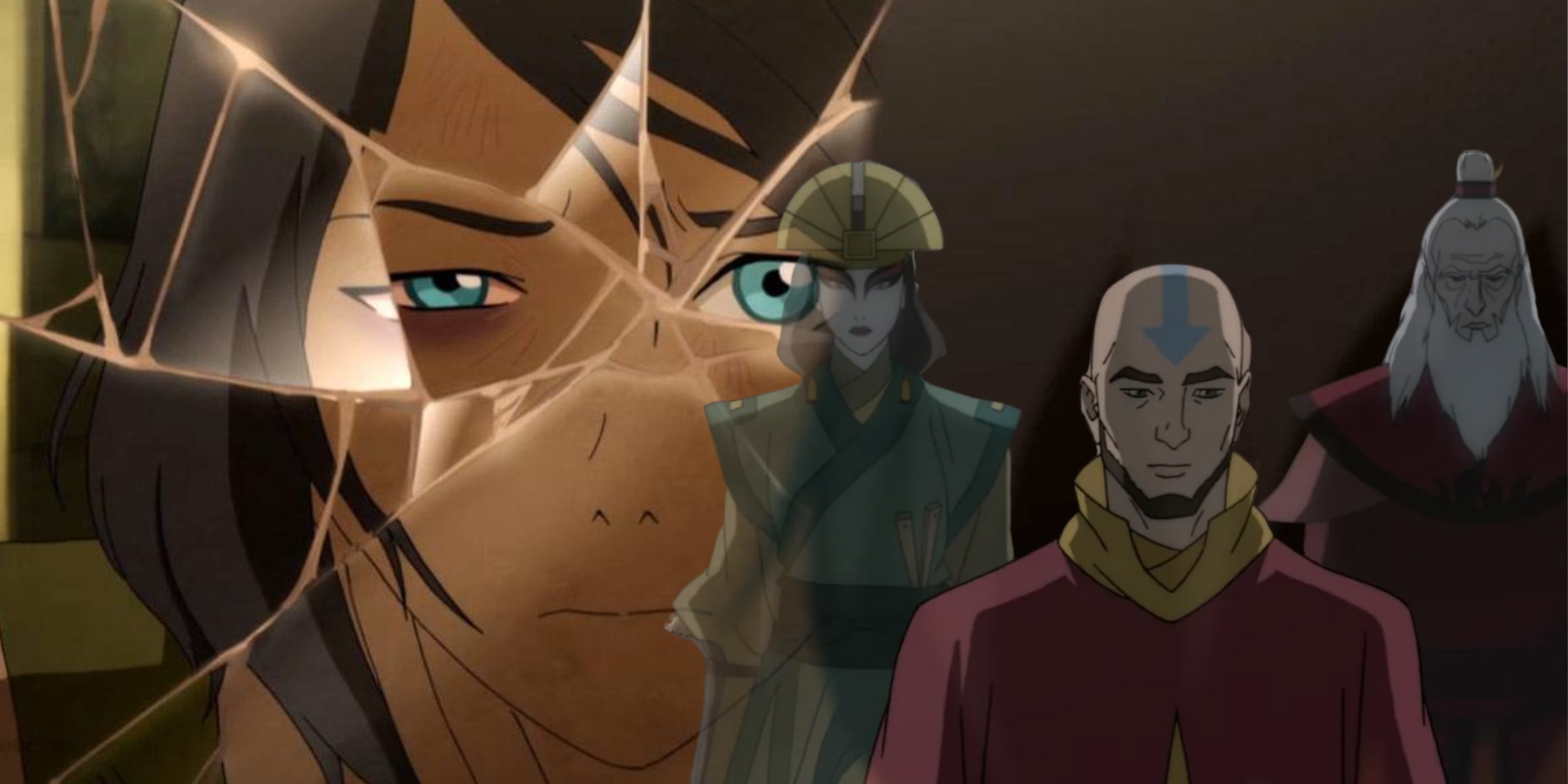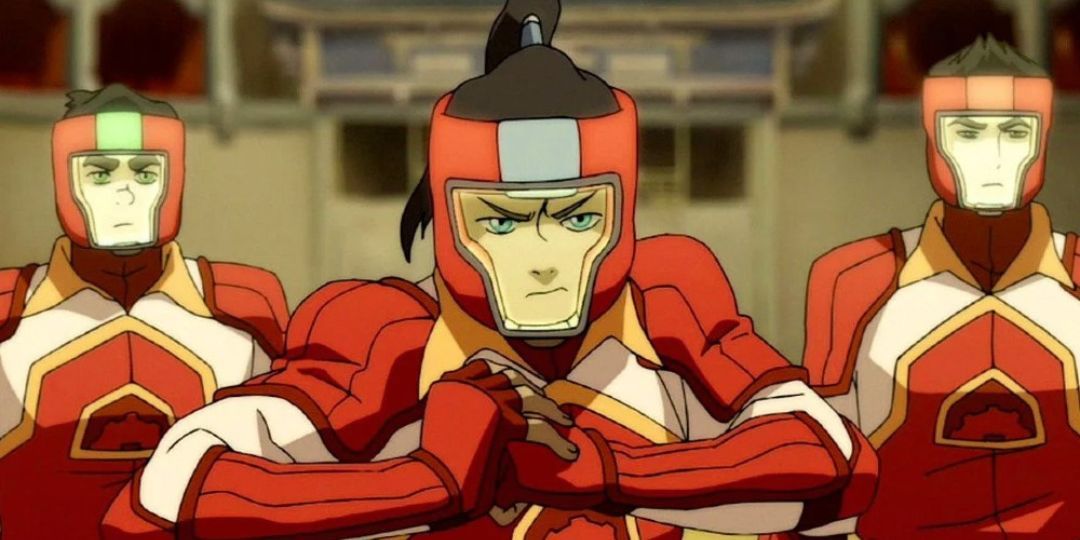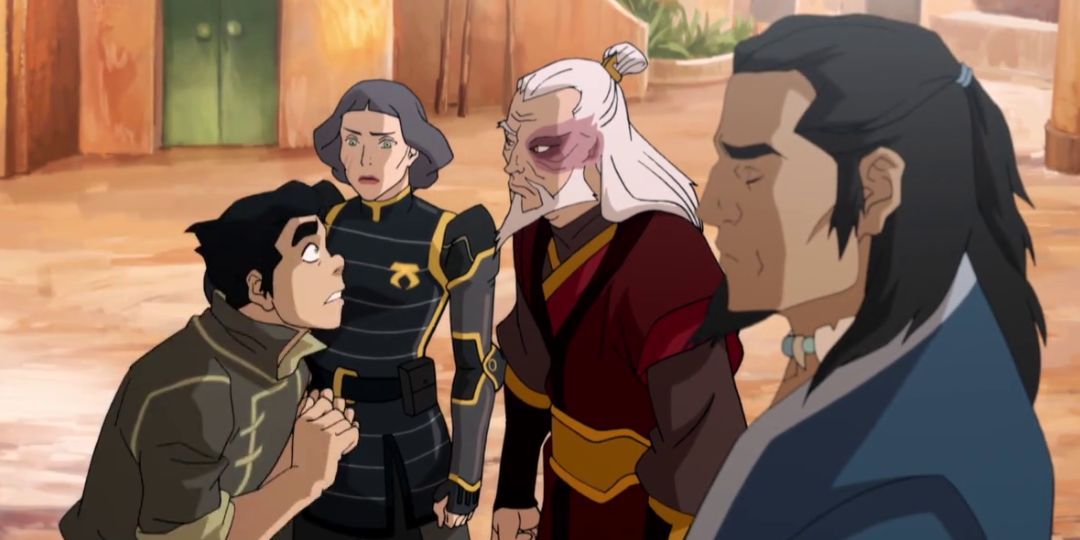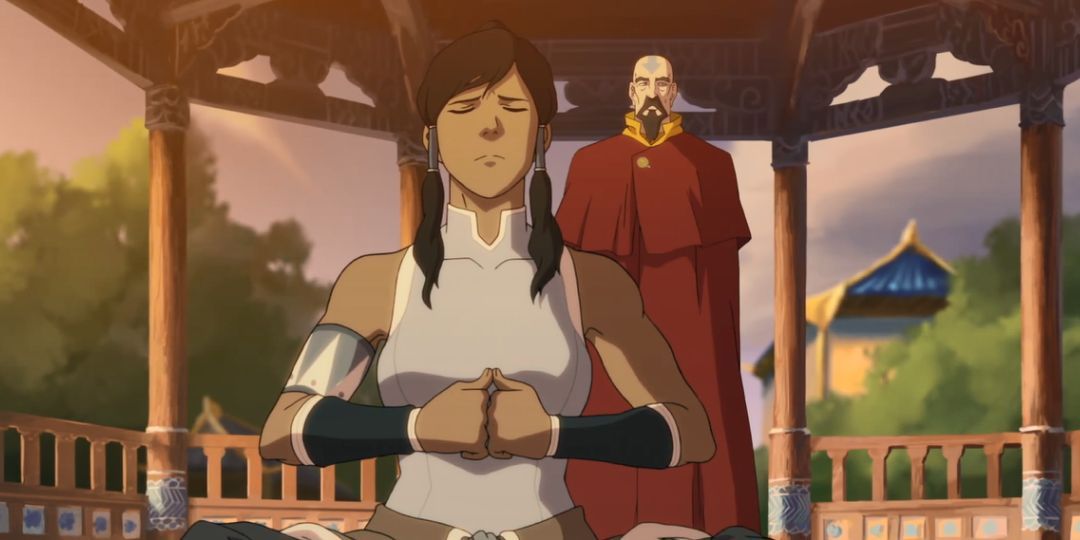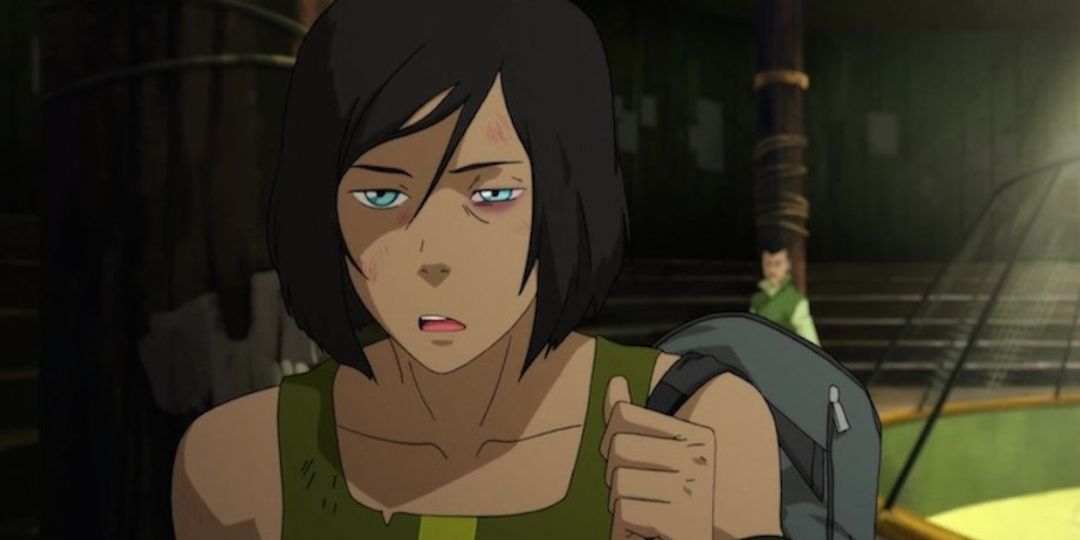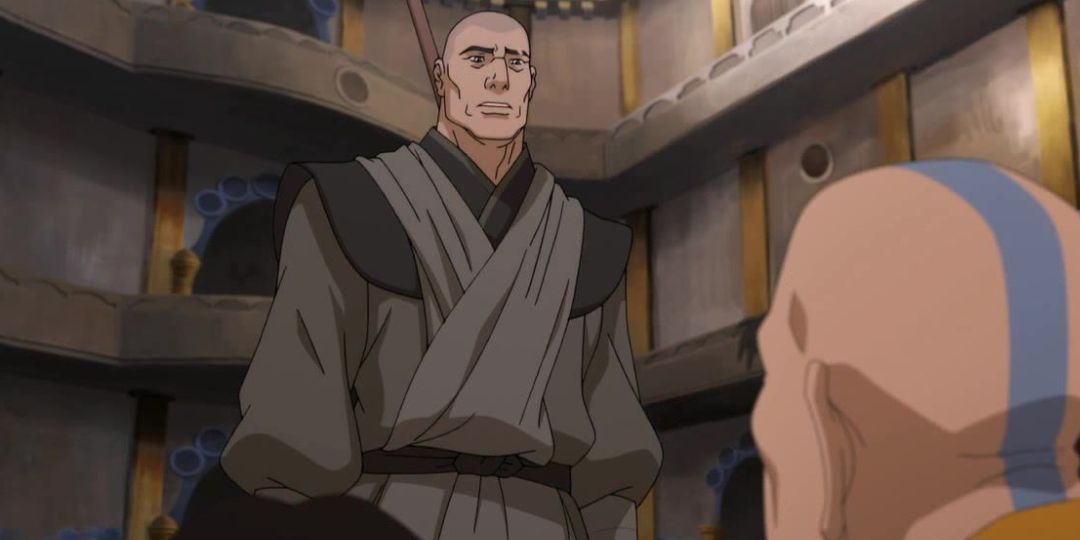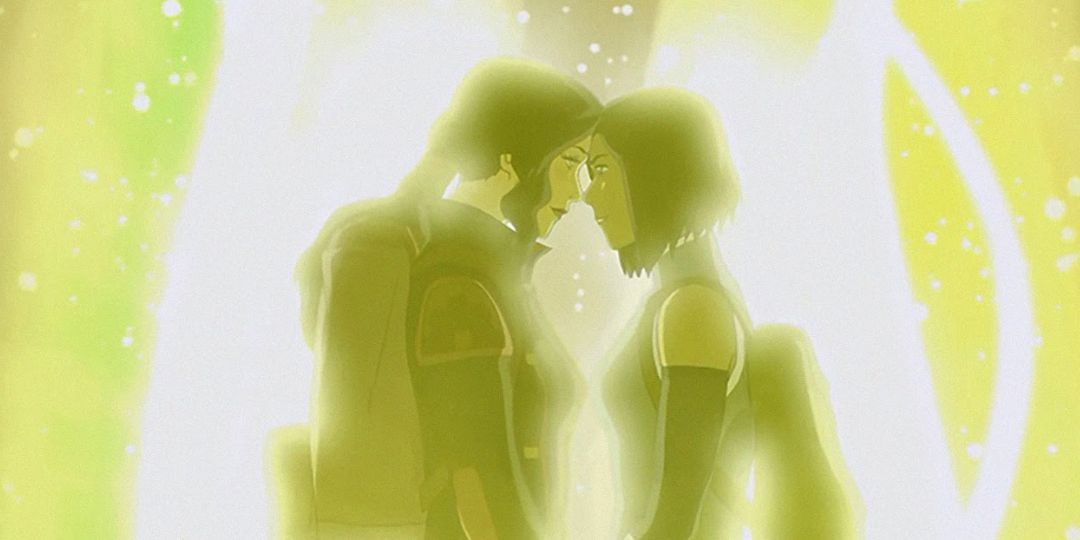Four years after Michael Dante DiMartino and Bryan Konietzko’s Avatar: The Last Airbender (ATLA) four-part finale aired on Nickelodeon, the creators brought spin-off series The Legend of Korra (TLOK) to the network. Originally, Korra was conceived as a 12-part miniseries by ATLA creators — affectionately dubbed Mike and Bryan by fans. But after Nickelodeon declined their pitch for an Avatar: The Last Airbender follow-up movie, The Legend of Korra was given room to grow into the four-season show fans know and love.
Well, some fans love it. Others claim to hate The Legend of Korra — fervently. This experience isn’t unique to the Avatar fandom, though. Whenever a new Star Wars film comes out that doesn’t align perfectly with long-time fans’ ideas for the world and characters, there is loads of criticism to be had. Some of this springs from fans’ love of said series; it means a lot to them, and they don’t want to see something they care about “ruined” or irrevocably changed. And while that’s understandable to an extent, what’s frustrating is some fans’ gatekeeping of the world of The Last Airbender — a world marked, primarily, by some inhabitants’ ability to manipulate, or “bend,” one of the four elements: water, earth, fire, air.
Although The Legend of Korra ended just shy of a decade ago, the hate remains. Some of this sense that Korra is a “bad” show likely stems from its erratic airing schedule; how many fans were able to tune into Season 3 or 4 at the time, really? A few years ago, the hard-to-find series finally dropped on Netflix, allowing both long-time viewers and newcomers to experience the full arc of Avatar Korra’s story. And although revisiting The Legend of Korra has helped some fans put the disdain to bed, it’s clear that the debate — “What’s better — The Last Airbender or Korra” — remains 10 years after Korra’s groundbreaking finale.
Avatar: The Last Airbender vs. The Legend Of Korra
Ask any Legend of Korra fan: it’s best not to compare the show to Avatar: The Last Airbender. Yes, the two shows share an incredibly immersive, rich world — one that was first introduced in ATLA. And yes, they both center on young Avatars — once-in-a-generation benders who can tame all four elements and who are tasked with maintaining balance in the world. But the shows couldn’t be more different.
Structurally speaking, both shows are split into “Books” — that is, a season — and the episodes serve as chapters. Apart from that, the series differ greatly in terms of how their stories are laid out. Avatar: The Last Airbender opens with Water Tribe siblings Katara (voice of Mae Whitman) and Sokka (voice of Jack DeSena) finding a young boy (and his sky bison, Appa) frozen in an iceberg. Come to find out, the boy is Avatar Aang (voice of Zach Tyler Eisen) — the last living airbender who vanished 100 years earlier.
At this point in the story, the world of ATLA is split into four nations, each corresponding with an element: there’s the massive Earth Kingdom; the Northern and Southern Water Tribes, which settled near the poles; the Air Nomads, who somewhat settled in temples spread throughout the land; and the Fire Nation. As any Avatar fan can tell you, everything changed when the Fire Nation attacked. That was 100 years before the start of the show, when Aang was 12 and just learning about his destiny as his generation’s Avatar. Now, it’s up to a newly reappeared Aang to master all four elements and end the century-long war the Fire Nation started.
The Legend of Korra takes place 70 years after the events of ATLA. The Avatar spirit has been reincarnated into Korra (voice of Janet Varney), who’s 17 when the series picks up. Headstrong and all about brute force, Korra has mastered her native waterbending as well as the elements of fire and earth. Airbending, though, is a different story. A more defensive style of fighting, airbending is the most outwardly spiritual — the one that requires the most calm and peace of mind and going with the flow.
And that makes it particularly challenging for Korra. Leaving the safety of the somewhat-isolated Southern Water Tribe, Korra ventures to Republic City — the capital of the United Republic of Nations, which serves all people. In this 1920s-inspired metropolis, she trains with Tenzin (voice of J.K. Simmons), Aang’s airbending son, and gets a little in over her head.
Unlike in Avatar: The Last Airbender, The Legend of Korra features a new primary antagonist each season. In the Season 1, Amon (voice of Steve Blum), a mysterious non-bender with a cult-like following, heads the Equalists — an anti-bending, anti-Avatar sect that believes bending creates inequality and inequity. Terrifyingly, Amon is also able to strip people of their bending.
In Season 2 of TLOK, viewers learn about the origins of the Avatar cycle as well as why the human and spirit worlds were kept separate.
The third season pits Korra against Zaheer (voice of Henry Rollins), an anarchist who believes in toppling the power structures of the four nations and ending the Avatar cycle — with any means necessary. And, finally, Season 4’s antagonist is Kuvira (voice of Zelda Williams), an opportunist-turned-fledgling-dictator who wants to unite the various fragments of Earth Kingdom land — and reclaim Republic City — when a power vacuum arises.
Which Is Better: The Last Airbender or Legend of Korra?
While Avatar: The Last Airbender may be a more polished, unified whole, it’s wrong to discount The Legend of Korra. When it comes down to it, the series are telling very different stories about heroes who couldn’t be more different. In ATLA, Aang feels incredibly guilty for vanishing when the world needed him most. He feels not only the weight of the war on his shoulders, but also the weight of his near-extinct culture. It’s hard being the world’s only hope to defeat an incredibly powerful empire, especially when you’re a pacifist by nature. And although he’s wise beyond his years in some respects, Aang is also a kid, really.
Korra, meanwhile, has a very tough act to follow. After all, Aang did succeed in ending the war and helped found the United Nations of the Avatar world. But being Aang’s successor isn’t just difficult in the world of the show; it’s a lot of pressure to live up to the hype when fans love the original series so much. Instead of a three-season epic, Korra is more episodic. Each season has her struggle and grow in a new way.
A typical teenager, the new Avatar often thinks she knows best, and she believes brute force is the answer to most problems. This has pushed some viewers to call Korra “unlikeable” and “difficult” — disparaging remarks that are frustratingly still used quite often to describe women, people of color, and queer folks. In reality, Korra is coming of age in the spotlight. She’s learning who she is, and who matters to her, all while trying to keep the world balanced and at peace.
That’s a lot for anyone, but, on top of that, she’s a gifted bender who feels incredibly frustrated when airbending doesn’t come easy to her. It’s an unacceptable, personal failing. Not to mention, her whole life has been about training to become the Avatar. Korra doesn’t really know herself outside of the identity and life path that’s been thrust upon her. Instead of telling an ATLA-style epic story of a group of friends taking down an evil empire — the ultimate good vs. evil showdown — TLOK is really about Korra and how she approaches these obstacles.
The nuanced antagonists diverge from the stereotypical “good vs. evil” format. Korra is confronted with villains whose motivations (to varying degrees) can seem understandable from a certain point of view, but it's the methods behind the madness that serve as the main sources of tension. It’s a much more mature, textured approach to typical action-adventure storytelling.
In addition to watching Korra deal with these antagonists, viewers also see her come of age across all four Books. Book 1 focuses on Korra realizing her limits; she can fail, and not everything comes easy, no matter how gifted you are. In the second season, she finds healing for the kid inside, all while confronting her past — both her own and the Avatar’s. In Book 3, she learns more about her place in the world; even being the Avatar doesn’t make her less vulnerable. This leads Korra to navigate depression and reevaluate the things that define her. In the final season, she reconnects with herself — outside of being the Avatar — and regains her confidence. She doesn’t “recover,” but learns to live with these mental health challenges. Ultimately, she finds a balance: she’s Korra and she’s the Avatar.
With crisply animated fight sequences, memorable characters and world building, and sharp writing, The Legend of Korra is all a viewer could ask for in an animated series. Both Avatar: The Last Airbender and The Legend of Korra succeed in telling the stories they set out to tell. While some fans were upset with Korra’s different feel and direction, it’s also true that just rehashing a similar story — and even a similar narrative structure — but with a new cast of characters wouldn’t have made for a tale worth telling. Just because a viewer has a preference for one series, that doesn’t automatically make the other bad. Yes, Korra isn’t The Last Airbender — and that’s a good thing.
Why Did The Legend Of Korra Get Canceled?
Nickelodeon clearly had enough faith in the Avatar sequel series to give it a four-season order and the first season, Book 1: Air, had a much sought-after Saturday morning time slot, garnering an average of 3.8 million views per episode.
Book 2: Spirits aired on Friday nights on Nickelodeon and averaged 2.6 million viewers per episode. This change in time slot might have accounted for the viewership decrease. But the real nail-in-the-coffin moment came ahead of Book 3: Change; when three episodes were leaked online, the network announced the broadcast of the third season just a week in advance.
For a while, Nickelodeon aired two episodes at a time on Friday nights, but later removed the last five episodes from its broadcast schedule entirely, pushing viewers to stream the remaining episodes on the Nickelodeon website or app. (Viewers could also rent or buy the episodes on Amazon Video or iTunes — not great.) Book 4: Balance wasn’t broadcast on Nickelodeon at all; while the network’s expanded cable channel, Nicktoons, carried new episodes, most viewers streamed the final season via Nickelodeon’s website or app.
The Legend of Korra didn’t really “fit in” with the network’s other animated offerings. A show steeped in fantasy and anime influence, it favored action and character-driven stories to just comedy — much like its predecessor, Avatar: The Last Airbender. Still, Nickelodeon’s failure to properly market the series or broadcast it logically colored many viewers' initial experiences with the show.
While The Legend of Korra wasn’t canceled, it sure felt like Nickelodeon gave up on the series and its fanbase. Thankfully, the Annie, Gracie, and Emmy Award-winning show has had something of a second coming thanks to Netflix, and its legacy of paving the way for queer representation in children’s media will always be remembered.

